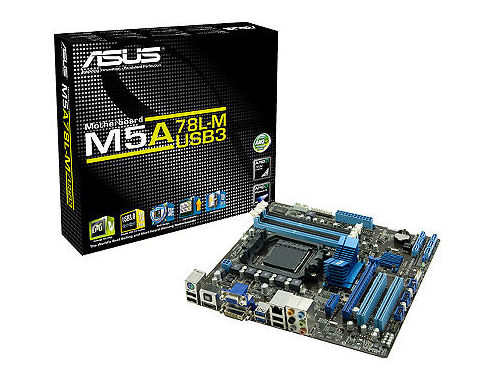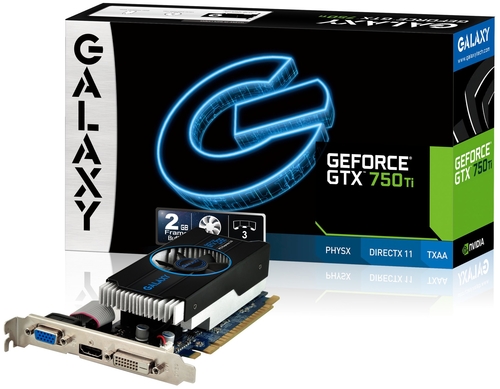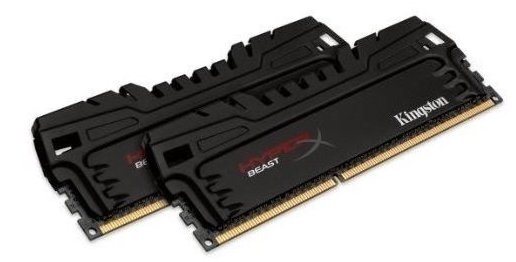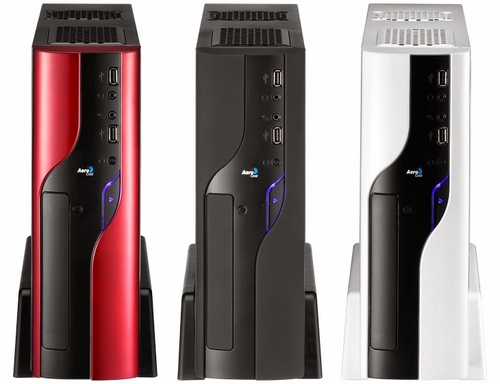For those who can't wait for the release of Valve's Steam Machines, this is a guide on how to build your own using parts tested to make sure they play nice together. The guide also doubles up as a cheap PC build for those looking to get the best value for money Linux gaming rig.
There are a number of guides floating around the net on how to build your own Steam Machine cheaply. However, many of these fall into the trap which many gamers fall into, adding expensive SSDs and CPUs, with some even making the unfortunate decision of adding a copy of Windows to the price. Knowing that I could do it better and cheaper myself, I decided to build my own Steam Machine following Valve’s specifications and adding in my own criteria; it should be small, be around the same price as a next-gen console, and able to run the most demanding games at the highest settings.
So if you can’t wait for Valve to release their much anticipated PC-console hybrid, want to trade in your crusty old laptop for a shiny new Steam Machine, or have never built your own PC and feel like now is the time to try it out, you can build one yourself . Of course, in the mean time you will have to use a standard controller while Valve take their time working on theirs. Similarly, given that Steam Machines are essentially PCs, this guide can also be considered a cheap PC build.
If you have never built a PC before, this guide doesn't actually show you how to put the pieces together; this is simply a collection of compatible parts which can be used to build one, since finding cheap parts which work well together can often be time consuming in of itself. Building a PC is much easier than one might think, and if you enjoy building things, it's also very fun and rewarding (and can save you quite a bit of money). There are plenty of guides on building computers on YouTube and other websites.
Note: Prices are in GBP and USD from the cheapest retailer I could find. My apologies to those using Euros, but considering the size of the Eurozone, it would take a considerable amount of time to track down the prices in each country and take an average. I have provided a link to the cheapest retailer for each comp.
Motherboard - Asus M5A78L-M/USB3 (£46 / $50)

The motherboard is the one component on here which is perhaps slightly more expensive than it needs to be. The reason I went with this one is the dual-channel RAM option to get the most out of the memory, and that it has a mini PCIe slot which is a nice option to have. At the same time, paying an extra £10 for the bit that holds all the components together seems like a good idea. It also has a very catchy name.
CPU - AMD FX 6300 (£74 / $110)
For the CPU I have chosen AMD’s FX 6300, known to be the best value for money CPU around. It has six cores and a clock speed of 3.5ghz, enough to handle any AAA title you can throw at it. There’s a common myth that you need at least an i5 for gaming, but this CPU proves that paying three or four times as much for an i7 that gives you an extra 4fps just isn't worth it.
The FX 6300 is also renowned for its overclocking ability and can be easily brought up to 4.5ghz, but since that would require replacing the stock heat sink and this being a budget build, that can just be something to bear in mind (I haven’t done this myself, but plan to at some point).
Graphics Card - KFA2 GTX 750 ti OC (£101 / $160)

This card is branded as Galaxy rather than KFA2 in some countries, hence the picture. The GTX 750 is the first of the Nvidia GPUs to use their new Maxwell architecture (released this year), which gives much better power efficiency than its predecessors. Thanks to this, it is also the most powerful card available (to my knowledge) to be able to fit in a slim case - a must if the “small” requirement is to be met.
It is also more powerful than the PS4 and Xbox One GPUs, which doesn't mean much in the real world, but it ticks a box and leaves the PC gaming master race feeling good about themselves. What that does mean though is that it should be capable of running all these AAA titles coming to Linux at good frame rates for many years to come (unless it’s The Witcher 2).
The card comes overclocked and with 2GB GDDR5 VRAM, which sounds impressive. What’s less impressive is that despite going through all the trouble of making a “low profile” graphics card, KFA2/Galaxy failed to include a low profile adapter, which means getting one yourself.
Note that you will have to use Nvidia’s 334 driver to run this card at its full potential.
HDD - Hitachi Travelstar Z5K500 500GB (£31 / $49)
Nothing much to say about this. It’s a hard drive, it’s cheap, has a silly name, and stores games. You can use your existing hard drive if you don’t want to re-install your entire library, in fact, that's what I did. Yes, I do have to clarify that this is the only part I didn't test, but this one is compatible (like nearly all hard drives) and has good reviews.
Memory - Kingston HyperX Beast (£63 / $90)

You could also save a bit by going with a single 8GB card, but the extra performance gained from having two cards on a dual channel configuration is worth the extra pennies. 8GB is more than enough and will be for many years to come. We can think about 16GB in 2032 when we’re all driving flying cars, everyone is speaking Chinese and using Linux as their main OS, but for now there are no games which I know of that use more than 6GB. The cards also have the added benefit of being called “beast” and looking like they've come straight out of a Batman film, which is good if you’re into that kind of thing.
Case/PSU - AeroCool QS-101 400W (£45 / $75*)

I couldn't find this case in the States, so took the lazy way out and converted the currency. If US readers can’t find this case either, then your best bet is to enter all the parts here into PCPartPicker and let it find a case and PSU which work with the components (preferably a slim case to take advantage of the low profile graphics card).
There’s not much to say about the case other than it’s smaller than a standard desktop case, comes in red, black or white and isn't the prettiest thing in the world but does the job. Some may be hesitant to use an Aerocool PSU, and can opt to get the the standalone case and get a micro-ATX PSU separately at a slightly higher cost. However, the total wattage of the system comes in at around 240w so the bundled one works just fine, but anyone wishing to use a different one should get a 300w minimum PSU.
My 3.5 inch hard drive was a bit of a tight squeeze, but a puny 2.5 inch one (like the one shown here) should be no problem, but something to keep in mind if you wish to use your old 3.5 inch HDD. If you plan on adding a DVD drive on the other hand, space may be more of an issue with cables in the way, but since this is a Steam Machine and Steam is a digital distribution platform, I doubt many retail machines will include one.
The Final Tally
Motherboard - £46 / $50
CPU - £74 / $110
Graphics Card - £101 / $160 (+£2 /$2 for low profile bracket)
HDD - £31 / $49
Memory - £63 / $90
Case/PSU - £45 / $75*
Total - £360 / $534
In the UK, that’s roughly the same price as an Xbox One (without Kinect), so meets that criteria, but in the US, this build is considerably more expensive than the console. After doing a bit of research, it might be better to say instead that consoles are considerably cheaper than PCs there since converting dollars to pounds directly, an Xbox One costs £240 in the US compared to £379 in the UK, while the parts for the Steam Machine build cost £40 less in the US than in the UK overall.
To make sure I hadn't made a build which is expensive by US standards using parts which are more expensive there, I looked online and found a budget build made by Gamespot and discovered that it uses many of the same parts and is priced the same as this build (theirs is $30 more expensive), albeit the money used there on buying Windows was used on extra RAM and more modern graphics card here. So yes, this build is considered cheap in the US too. The price and specs are also in similar to the iBuyPower and CyberPowerPC Steam machines shown earlier this year.
For me, this raises some questions about the Steam Machine and how much of the console market it will be able to grab, especially in the US where consoles appear to be considerably cheaper. Although having the machines produced by a number of third party vendors has its advantage, price-wise it will be at a disadvantage (in the US at least) with regards to Microsoft and Sony being able to mass produce cheaply. Obviously, over a very short period of time, having a console would be considerably more expensive given the price of games compared to those on Steam, and given that buying a console is something you do every 6-8 years, that may sit well with some people choosing between the two. Similarly, despite being marketed as a “living room PC”, there are only a handful of games on Steam which support local co-op, so Valve have their work cut out for them in that department too.
With clear advantages and disadvantages, it remains to be seen how the Steam Machine will fare against its competitors, but there is always the appeal for those who already have a Gaming PC and want to have a second one in the living room, streaming from Windows or using Linux titles natively (which Valve has stated as a possible use). The outcome will likely depend on how well it is marketed, and given that many developers are porting to Linux with the prospect of SteamOS as an incentive, I hope that they do a good job of it. If for some reason it isn't as successful as planned, then those who bought a Steam Machine or built their own will still be left with a good gaming PC, which really isn't a very bad deal and is more than can be said for those who bought Panasonic’s 3DO or Nintendo’s Virtual Boy back in the day.
Installing SteamOS session
You can download SteamOS here and install it. However, since it is still in early Beta, those wishing to install SteamOS on a Steam Machine, or try it out on an existing computer running a Debian-derived distro may wish to use the SteamOS session instead. This allows you to choose between your regular desktop or SteamOS at the login screen. This guide takes you through the necessary steps. Please note that last I checked, you can’t log back out of SteamOS yet since that feature hasn't been implemented.
There are a number of guides floating around the net on how to build your own Steam Machine cheaply. However, many of these fall into the trap which many gamers fall into, adding expensive SSDs and CPUs, with some even making the unfortunate decision of adding a copy of Windows to the price. Knowing that I could do it better and cheaper myself, I decided to build my own Steam Machine following Valve’s specifications and adding in my own criteria; it should be small, be around the same price as a next-gen console, and able to run the most demanding games at the highest settings.
So if you can’t wait for Valve to release their much anticipated PC-console hybrid, want to trade in your crusty old laptop for a shiny new Steam Machine, or have never built your own PC and feel like now is the time to try it out, you can build one yourself . Of course, in the mean time you will have to use a standard controller while Valve take their time working on theirs. Similarly, given that Steam Machines are essentially PCs, this guide can also be considered a cheap PC build.
If you have never built a PC before, this guide doesn't actually show you how to put the pieces together; this is simply a collection of compatible parts which can be used to build one, since finding cheap parts which work well together can often be time consuming in of itself. Building a PC is much easier than one might think, and if you enjoy building things, it's also very fun and rewarding (and can save you quite a bit of money). There are plenty of guides on building computers on YouTube and other websites.
Note: Prices are in GBP and USD from the cheapest retailer I could find. My apologies to those using Euros, but considering the size of the Eurozone, it would take a considerable amount of time to track down the prices in each country and take an average. I have provided a link to the cheapest retailer for each comp.
Motherboard - Asus M5A78L-M/USB3 (£46 / $50)

The motherboard is the one component on here which is perhaps slightly more expensive than it needs to be. The reason I went with this one is the dual-channel RAM option to get the most out of the memory, and that it has a mini PCIe slot which is a nice option to have. At the same time, paying an extra £10 for the bit that holds all the components together seems like a good idea. It also has a very catchy name.
CPU - AMD FX 6300 (£74 / $110)
For the CPU I have chosen AMD’s FX 6300, known to be the best value for money CPU around. It has six cores and a clock speed of 3.5ghz, enough to handle any AAA title you can throw at it. There’s a common myth that you need at least an i5 for gaming, but this CPU proves that paying three or four times as much for an i7 that gives you an extra 4fps just isn't worth it.
The FX 6300 is also renowned for its overclocking ability and can be easily brought up to 4.5ghz, but since that would require replacing the stock heat sink and this being a budget build, that can just be something to bear in mind (I haven’t done this myself, but plan to at some point).
Graphics Card - KFA2 GTX 750 ti OC (£101 / $160)

This card is branded as Galaxy rather than KFA2 in some countries, hence the picture. The GTX 750 is the first of the Nvidia GPUs to use their new Maxwell architecture (released this year), which gives much better power efficiency than its predecessors. Thanks to this, it is also the most powerful card available (to my knowledge) to be able to fit in a slim case - a must if the “small” requirement is to be met.
It is also more powerful than the PS4 and Xbox One GPUs, which doesn't mean much in the real world, but it ticks a box and leaves the PC gaming master race feeling good about themselves. What that does mean though is that it should be capable of running all these AAA titles coming to Linux at good frame rates for many years to come (unless it’s The Witcher 2).
The card comes overclocked and with 2GB GDDR5 VRAM, which sounds impressive. What’s less impressive is that despite going through all the trouble of making a “low profile” graphics card, KFA2/Galaxy failed to include a low profile adapter, which means getting one yourself.
Note that you will have to use Nvidia’s 334 driver to run this card at its full potential.
HDD - Hitachi Travelstar Z5K500 500GB (£31 / $49)
Nothing much to say about this. It’s a hard drive, it’s cheap, has a silly name, and stores games. You can use your existing hard drive if you don’t want to re-install your entire library, in fact, that's what I did. Yes, I do have to clarify that this is the only part I didn't test, but this one is compatible (like nearly all hard drives) and has good reviews.
Memory - Kingston HyperX Beast (£63 / $90)

You could also save a bit by going with a single 8GB card, but the extra performance gained from having two cards on a dual channel configuration is worth the extra pennies. 8GB is more than enough and will be for many years to come. We can think about 16GB in 2032 when we’re all driving flying cars, everyone is speaking Chinese and using Linux as their main OS, but for now there are no games which I know of that use more than 6GB. The cards also have the added benefit of being called “beast” and looking like they've come straight out of a Batman film, which is good if you’re into that kind of thing.
Case/PSU - AeroCool QS-101 400W (£45 / $75*)

I couldn't find this case in the States, so took the lazy way out and converted the currency. If US readers can’t find this case either, then your best bet is to enter all the parts here into PCPartPicker and let it find a case and PSU which work with the components (preferably a slim case to take advantage of the low profile graphics card).
There’s not much to say about the case other than it’s smaller than a standard desktop case, comes in red, black or white and isn't the prettiest thing in the world but does the job. Some may be hesitant to use an Aerocool PSU, and can opt to get the the standalone case and get a micro-ATX PSU separately at a slightly higher cost. However, the total wattage of the system comes in at around 240w so the bundled one works just fine, but anyone wishing to use a different one should get a 300w minimum PSU.
My 3.5 inch hard drive was a bit of a tight squeeze, but a puny 2.5 inch one (like the one shown here) should be no problem, but something to keep in mind if you wish to use your old 3.5 inch HDD. If you plan on adding a DVD drive on the other hand, space may be more of an issue with cables in the way, but since this is a Steam Machine and Steam is a digital distribution platform, I doubt many retail machines will include one.
The Final Tally
Motherboard - £46 / $50
CPU - £74 / $110
Graphics Card - £101 / $160 (+£2 /$2 for low profile bracket)
HDD - £31 / $49
Memory - £63 / $90
Case/PSU - £45 / $75*
Total - £360 / $534
In the UK, that’s roughly the same price as an Xbox One (without Kinect), so meets that criteria, but in the US, this build is considerably more expensive than the console. After doing a bit of research, it might be better to say instead that consoles are considerably cheaper than PCs there since converting dollars to pounds directly, an Xbox One costs £240 in the US compared to £379 in the UK, while the parts for the Steam Machine build cost £40 less in the US than in the UK overall.
To make sure I hadn't made a build which is expensive by US standards using parts which are more expensive there, I looked online and found a budget build made by Gamespot and discovered that it uses many of the same parts and is priced the same as this build (theirs is $30 more expensive), albeit the money used there on buying Windows was used on extra RAM and more modern graphics card here. So yes, this build is considered cheap in the US too. The price and specs are also in similar to the iBuyPower and CyberPowerPC Steam machines shown earlier this year.
For me, this raises some questions about the Steam Machine and how much of the console market it will be able to grab, especially in the US where consoles appear to be considerably cheaper. Although having the machines produced by a number of third party vendors has its advantage, price-wise it will be at a disadvantage (in the US at least) with regards to Microsoft and Sony being able to mass produce cheaply. Obviously, over a very short period of time, having a console would be considerably more expensive given the price of games compared to those on Steam, and given that buying a console is something you do every 6-8 years, that may sit well with some people choosing between the two. Similarly, despite being marketed as a “living room PC”, there are only a handful of games on Steam which support local co-op, so Valve have their work cut out for them in that department too.
With clear advantages and disadvantages, it remains to be seen how the Steam Machine will fare against its competitors, but there is always the appeal for those who already have a Gaming PC and want to have a second one in the living room, streaming from Windows or using Linux titles natively (which Valve has stated as a possible use). The outcome will likely depend on how well it is marketed, and given that many developers are porting to Linux with the prospect of SteamOS as an incentive, I hope that they do a good job of it. If for some reason it isn't as successful as planned, then those who bought a Steam Machine or built their own will still be left with a good gaming PC, which really isn't a very bad deal and is more than can be said for those who bought Panasonic’s 3DO or Nintendo’s Virtual Boy back in the day.
Installing SteamOS session
You can download SteamOS here and install it. However, since it is still in early Beta, those wishing to install SteamOS on a Steam Machine, or try it out on an existing computer running a Debian-derived distro may wish to use the SteamOS session instead. This allows you to choose between your regular desktop or SteamOS at the login screen. This guide takes you through the necessary steps. Please note that last I checked, you can’t log back out of SteamOS yet since that feature hasn't been implemented.
Some you may have missed, popular articles from the last month:
ASUS will have to soldier on all motherboard
it will make Steam machines cheaper
I'm also hoping companies like Lenovo and Samsung handsets announced it will sell steam machines